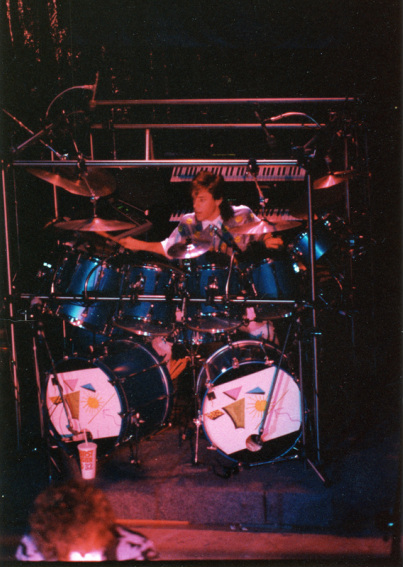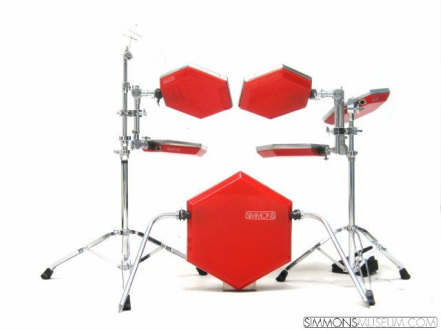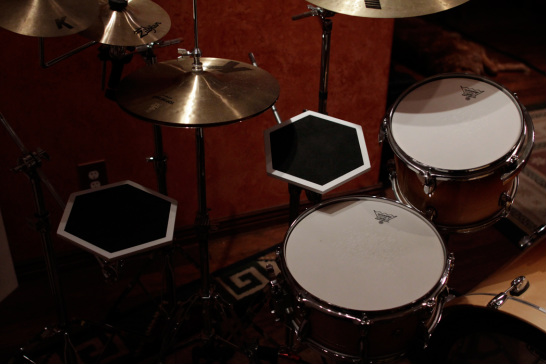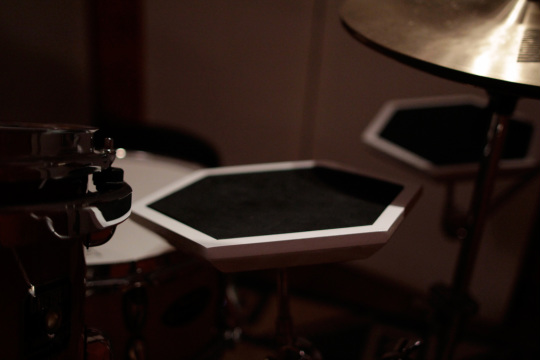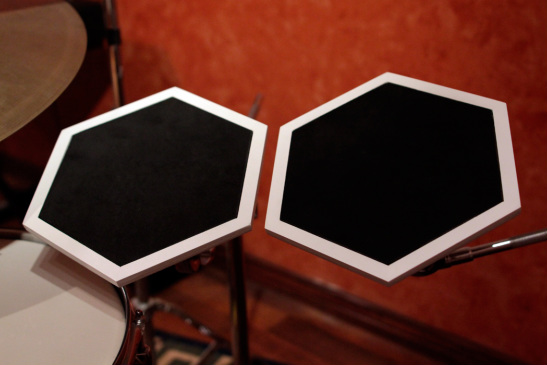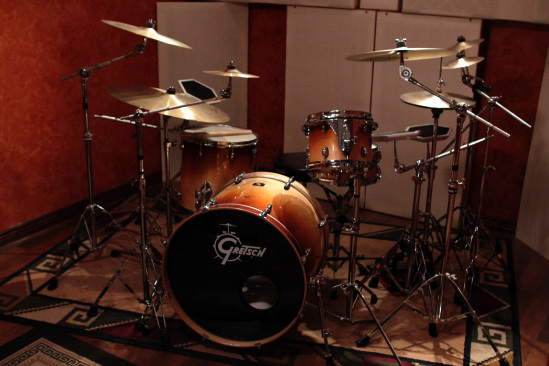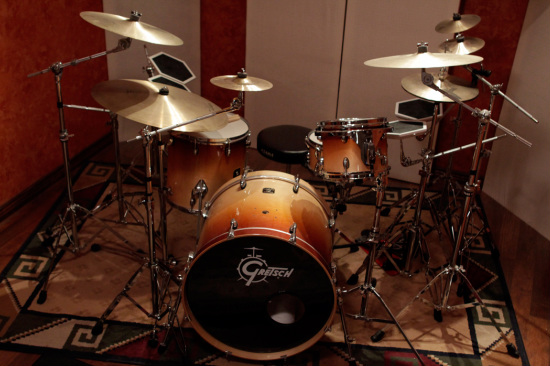|
As memories of summer still linger and mixing at Wavelength Studio is on going for my next single (Divin’ Down); I’ve been gearing up once again for this fall/winters recording sessions. Like a blow back to my past I’ve built (by hand) my own version of some vintage electronic drums I performed and toured with back in the Northstar days... The Simmons SDS-V™. This was the first mass produced electronic drum set to really break through and become widely adapted during the '80s New Romantic music movement. Otherwise known in the States as the 'second British invasion.' Simmons drums were generously employed by such bands as Ultravox, Duran Duran, and Depeche Mode to name a few. Looking to keep pace with the growing movement of the time, even rock groups such as Genesis, Rush and Def Leppard incorporated the 'Simmons sound' into their music. I originally jumped on Ebay thinking I’d just buy a set of vintage Simmons. Fat chance. Like so many instruments of that time period the demand and asking price for such pieces seemed astronomical to me. I suddenly felt a sting of regret about ever letting go of my Simmons set in the first place, even if it was from another time. So, as an alternative, I decided to build my own 'Simmons' drums. The original SDS-V’s where made of wood by none other than Dave Simmons himself. Given my limited knowledge in manufacturing materials other than wood (and also wanting to source parts locally) it was a 'no-brainer' to model my drums off the original wood bodied SDS-V’s. The drums I’ve built, in principle, look and operate the same way as Dave's early design. I did, however, make some significant modifications to his specs to fit my particular needs. For instance, the drums I’ve built are roughly half the size of the originals. I shrunk the size down because I can achieve a physically tighter placement when integrating these drums with my acoustic set. SDS-V’s were designed originally to be played as a 'stand-alone' set, not with an acoustic drum kit. Although drummers such as Neil Peart managed to successfully perform with an acoustic/Simmons hybrid kit; I remember always thinking they were (because of the design to approximate the size of a standard kick and tom-tom) a bit difficult to 'squeeze' in around my regular drums. One criticism Dave Simmons received with his original design was the playing surface being, 'too hard' and 'unforgiving.' Many a drummer complained of wrist pain and injury due to Dave’s use of 'riot shield' (i.e. Lexan) for the surface. While the hardness of the surface never bothered me much, my bigger concern (when recording) was always the loud 'clicky' noise they made when the stick hit. It was a never-ending challenge to keep that unwanted sound away from mics meant to pick up the acoustic drums. For my modern adaptation I came up with a way to use high-density foam for the playing surface. This modification not only gives a realistic stick response but also a greatly attenuated acoustic impact transient well within an acceptable limit. As to not 'bleed' into the acoustic drum mics at such a level as to make it difficult for mixing later. The impact sound is really quite low and comparable to the type of sound emitted by the more modern mesh head designs found on Roland V-Drums™ for example. Lastly, I designed my Simmons style drums to be mounted via a modern cymbal boom stand. This, again, was done to enhance the ability to place the 'e-drums' in a compact configuration around acoustic drums. Also, the cost of buying and maintaining a standard cymbal boom stand is much less than the suspended (Pearl™) tom mount and stand that was required for the original. I was able to build these drums (with the exception of the modified Pintech™ transducers) from parts purchased locally at Lowes™, Home Depot™, Michaels™ and Radio Shack™. I’m really quite pleased and excited with the way my Simmons inspired electronic drums turned out. I’ve been able to get the tracking of the internal transducer to trigger very accurately. I wired in some in-line resistors to pad the trigger output by 20dB. So as to give plenty of room to adjust triggering sensitivities when connected to a variety of different drum brains or trigger to MIDI interfaces. I’m having very good luck directly running the drum trigger feeds into the analog audio inputs of my RME Fireface800™ using Logic Pro™ and apulSoft’s apTrigga2 AU plug-in. This to trigger any number of drum sounds (including samples of the SDS-V). XLN Audio has come out with REAL MACHINES, an actual virtual instrument modeler of the SDS-V and other vintage electronic drums. I haven’t personally tried the software but it looks cool.
Finally, I’d like to thank Wolfgang Stölzle for his excellent Simmonsmuseum’s blog. Discovering his blog inspired me and gave enough information to help build my own drums based upon the beautiful vintage Simmons SDS-V™. A big shout out goes to Dave Simmons, who’s early '80s inventions helped drive an entire musical trend.
18 Comments
9/7/2011 03:34:44 pm
This is such typical "Jeff Jewkes" engineering! I love it....and the details are impeccable. Nice Northstar shot BTW. Was that from the Grand?
Reply
9/7/2011 04:35:24 pm
Thanks Jason! Yep, that was from one of the Grand shows. . .
Reply
9/7/2011 05:11:51 pm
Thanks so much Wolfgang :)
Reply
9/8/2011 07:23:56 am
Wolfgang,
Reply
Jennifer Smith
9/9/2011 10:32:46 am
Wow...looks amazing. I still say you should bring back the clown pants and Liberace shirts though, man. Tee hee...awesome job bro! Hugs from your lil sis!
Reply
7/17/2012 03:52:18 pm
I just added this webpage to my feed reader, excellent stuff. Cannot get enough!
Reply
7/26/2012 11:30:14 am
Thank you everyone for reading and for your kind comments. I'm glad you are finding this blog interesting and informative. I will continue to try to post up stuff of the like kind. Best Regards, Jeff
Reply
Jeff Jewkes
8/17/2013 06:49:28 pm
Hi Dennis, Sorry for the late reply. I haven't had a chance to get back to this blog lately. I used maple hardwood laminate for the shells. You can buy it at Lowe's or Home Depot in 4' x 8' sheets of varying depths. I used 3/4". I think any material that is sturdy enough would work. I chose wood because that's the medium I'm used to working with and have the tools for. As far as the heads go, I chose a high density compressed polyurethane foam, 1/4" thick. You can find this at any craft store such as Michael's, Hobby Lobby, etc. It gave me the right stick rebound, transducer plate tracking and attenuated acoustic transient (meaning it didn't produce too much stick click noise that would bleed into acoustic drum mics). The other cool thing is that you can get it any many different colors. White, red, green, black, etc. You can match it to or accent it against the shell color. I hope this answers your questions. Thanks for checking out the blog!
Reply
Anthony
2/8/2015 07:24:22 pm
Hello Jeff,
Reply
Leave a Reply. |
Jeff JewkesProfessional musician / composer / audio engineer who also ventures into fine art photography, geometric design, lutherie, artisan bread baking, electrical engineering, blogging, charity drives, and other things that keep life crazy and amazing. . . Article Quick Links:
Boss SD-1 Super OverDrive Allédyne Modification
Hallucinogenic Dissociative Effects Pedal Disorder 'Pearls' Franklin's Instrument of Madness! 'Eurydice' 'Smoothie' or 'Calypso' What Ever My Preference... 'Little Wings' 'Kate' 'Wings' The Beat Goes On If It's Good Enough For Bootsy... Hello, Old Friend... The Uninvited Guest My Simmons Drum Inspiration |
